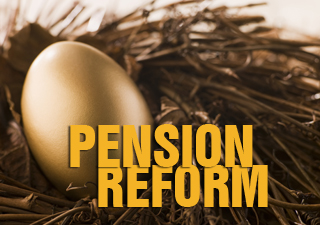Media

Your Pension Under the Governor’s Proposal
You may have seen PSEA materials showing your pension reduced significantly under Gov. Tom Corbett’s pension reform proposal. So what does the proposal really do?
For most teachers, the “multiplier” is currently 2.5 percent. To determine your pension, this multiplier is multiplied by the number of years of service times average salary.
For a teacher who worked 30 years, the formula would be 30 x 2.5% = 75% of final pay.
Under Gov. Corbett’s proposal, any employee with a multiplier of 2.5 percent would see it reduced to 2 percent for future years. For example, if you’ve already worked 20 years, you’ve earned a pension of 50 percent of final pay. If you worked an additional 10 years at the new multiplier, that would add an additional 20 percent of final pay to your pension benefit.
If you are a newer teacher hired after 2010, you already receive a 2 percent multiplier—based on changes to the pension plan in Act 120 legislation that the PSEA endorsed—and would see no change in their benefit. In fact, the 2 percent multiplier was what every teacher, school employee and state worker received prior to 2001 as well.
Moreover, Gov. Corbett’s proposed pension reform plan will not make any changes to pension benefits already earned, nor would it touch those of retirees. The proposed changes for current employees would only affect benefits earned in future years.
For more on our pension crisis, see our timeline of events and 5 Pension Myths vs. Facts.